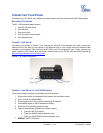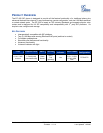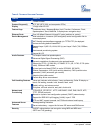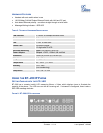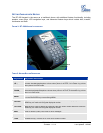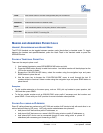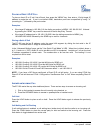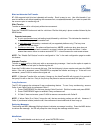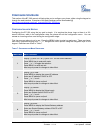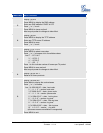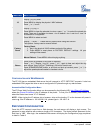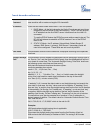
CONF
Press CONF button to connect Calling/Called party into conference
FLASH
Flash to switch between two lines
SPEAKER
Enable/Disable hands-free speaker mode
SEND
Press SEND to dial a new number or redial last number dialed. Press send button to send
a call immediately before “no key entry timeout” value expires
MUTE/DEL
Mute an active call; or Delete a key entry
Also used to ‘REJECT’ incoming call.
0 - 9, *, #
Standard phone keypad; press # key to send call; * key for special needs
MAKING AND ANSWERING PHONE CALLS
HANDSET, SPEAKERPHONE AND HEADSET MODE
The BT–200 handset can be toggled between speaker mode (hands-free) or headset mode. To toggle
between the handset and speaker/headset, press the Hook Flash in the handset cradle or press the
SPEAKER button.
Grandstream Networks, Inc. BT-200 User Manual Page 12 of 35
Firmware 1.1.1.14 Last Updated: 12/2006
PLACING A TRADITIONAL PHONE CALL
There are four ways to place a call:
1. Use handset, headset or press SPEAKERPHONE button and dial.
2. Press the SEND button directly to redial last number. Last dialed number will be displayed on the
LCD as the number is dialed.
3. Browse the CALLED/CALLER history, select the number using the navigation keys and press
SEND button to place the call.
4. Use the menu key to browse the “CALLED/CALLERS” menu to scroll through the last 10
numbers dialed or received. Select number using the navigation keys and press SEND button to
place the call.
Examples:
• To dial another extension on the same proxy, such as 1008, pick up handset or press speaker, dial
1008 and then press SEND.
• To dial an outside number such as 626-666-7890, enter prefix if necessary and dial number and
press SEND. Check with your VoIP provider for more information about prefixes.
PLACING CALLS USING AN IP ADDRESS
Direct IP calling allows two parties using a BT-200 and another VoIP device to talk with each other in an
ad hoc fashion without a SIP proxy. VoIP calls can be made between two phones if:
•
both phone/VoIP device have public IP addresses, or
•
both phone/VoIP device are on a same LAN/VPN using private or public IP addresses, or
•
both phone/VoIP device can be connected through a router using public or private IP
addresses (with necessary port forwarding or DMZ)




